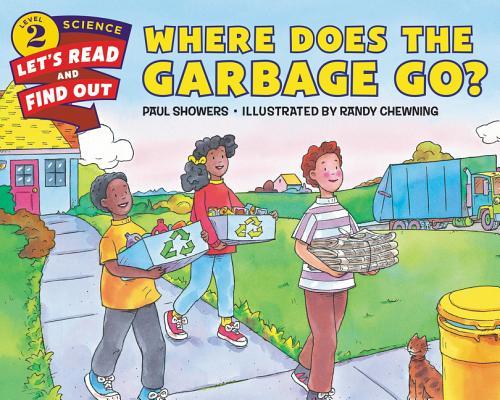Read and find out about what happens to our trash in this colorfully illustrated nonfiction picture book.
Follow that garbage truck--to the landfill to see how trash keeps piling up...to the incinerator to see how trash can be turned into energy...to the recycling center to see how a soda bottle can be turned into a flowerpot.
This picture book is filled with fun charts and diagrams to explain how we deal with the problem of too much trash. Activities throughout the book empower kids to help the environment, whether it's by separating trash from recycling or using a lunch box instead of a paper bag.
This is a clear and appealing science book for early elementary age kids, both at home and in the classroom. Both text and artwork were vetted for accuracy by Robin Woods, formerly of the United States Environmental Protection Agency, Dr. William Rathje, founder of the Garbage Project and professor emeritus at the University of Arizona, and Thomas Frankiewicz.
This is a Level 2 Let's-Read-and-Find-Out, which means the book explores more challenging concepts for children in the primary grades. The 100+ titles in this leading nonfiction series are:
- hands-on and visual
- acclaimed and trusted
- great for classrooms
Top 10 reasons to love LRFOs:
- Entertain and educate at the same time
- Have appealing, child-centered topics
- Developmentally appropriate for emerging readers
- Focused; answering questions instead of using survey approach
- Employ engaging picture book quality illustrations
- Use simple charts and graphics to improve visual literacy skills
- Feature hands-on activities to engage young scientists
- Meet national science education standards
- Written/illustrated by award-winning authors/illustrators & vetted by an expert in the field
- Over 130 titles in print, meeting a wide range of kids' scientific interests
Books in this series support the Common Core Learning Standards, Next Generation Science Standards, and the Science, Technology, Engineering, and Math (STEM) standards. Let's-Read-and-Find-Out is the winner of the American Association for the Advancement of Science/Subaru Science Books & Films Prize for Outstanding Science Series.
